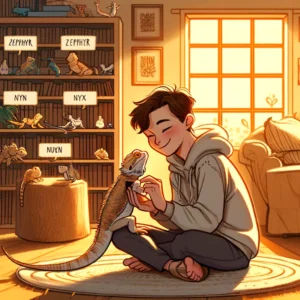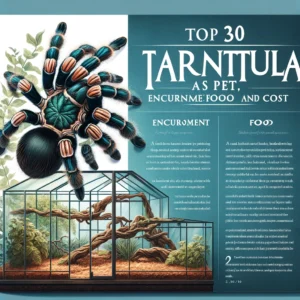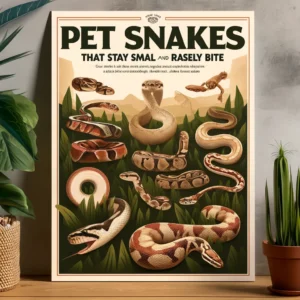Introduction:
Adopting a bearded dragon brings the joy of companionship along with the responsibility to provide a habitat that closely mimics their natural environment. The right housing is critical for their health, comfort, and overall happiness. This article explores the essentials of setting up an appropriate home for your scaly friend.

- Appropriate Size Enclosure: A juvenile bearded dragon can start in a 20-gallon tank, but adults need at least a 40-gallon breeder tank due to their size and activity level.
- Temperature Gradient: Create a basking spot with a temperature of about 95-110°F and a cooler end of the tank around 75-85°F to allow the bearded dragon to thermoregulate.
- Lighting: Provide UVA/UVB lighting for 12-14 hours a day to ensure proper calcium metabolism and to maintain a natural day/night cycle.
- Humidity: Maintain humidity levels around 30-40% to mimic their natural arid environment and prevent respiratory issues.
- Substrate: Use a safe substrate like reptile carpet or tiles; avoid sand or loose substrate for young dragons to prevent impaction.
- Furnishings: Include sturdy branches, rocks, and hides for climbing, basking, and shelter, which also help in nail filing.
- Accessibility: Ensure the tank is easy to clean, with accessible areas that can be reached without disturbing the dragon too much.
- Security: A well-fitting lid is essential to prevent escapes and to keep other pets or pests out of the enclosure.
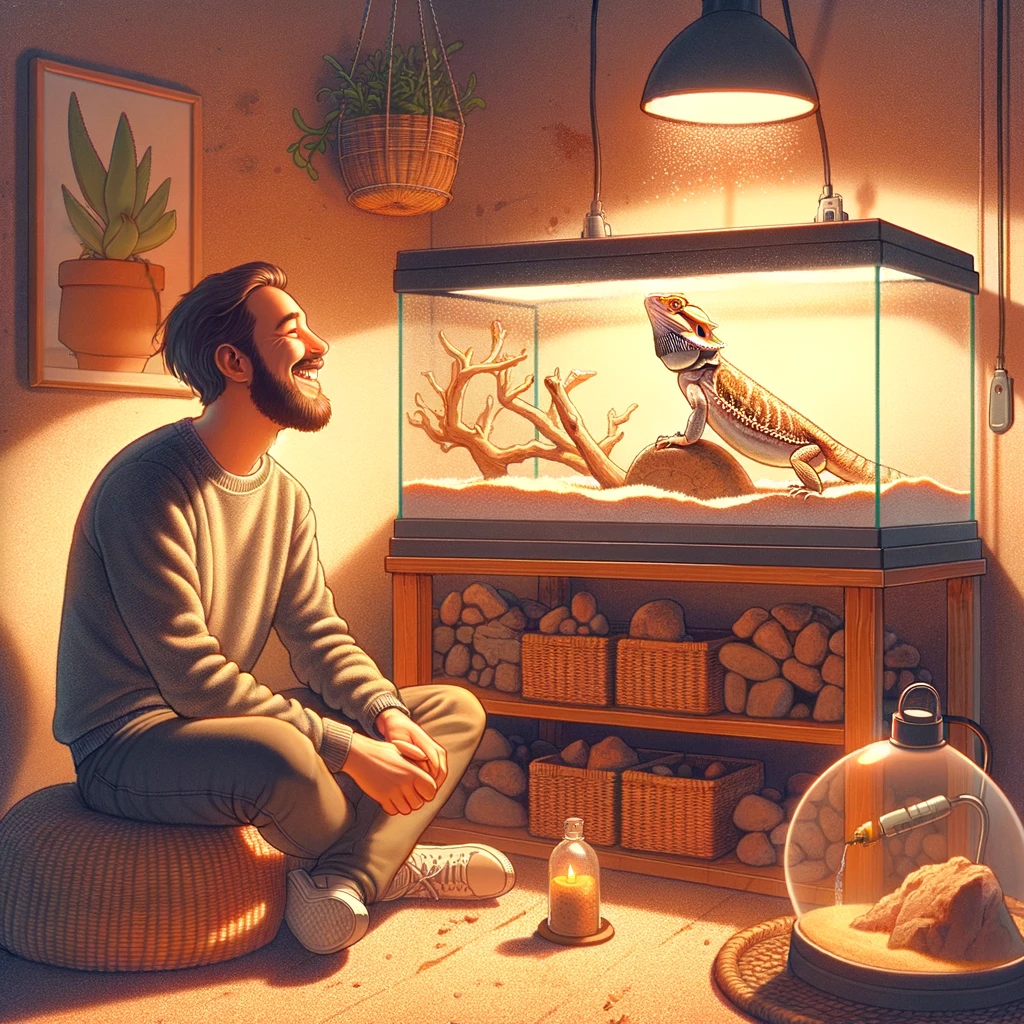
Habitat Size:
Adult bearded dragons require a tank size of at least 75 gallons, with ample space to roam, bask, and explore. For babies and juveniles, smaller tanks may suffice temporarily, but they grow quickly and will need more space.
Temperature Control:
A bearded dragon’s enclosure should have a temperature gradient, with a basking area between 95-110°F and a cooler end of the tank around 80-90°F. Nighttime temperatures can drop to 65-75°F. Monitoring and maintaining these temperatures with thermometers and heating devices is non-negotiable for their wellbeing.
Lighting:
UVB lighting is non-negotiable for bearded dragons, as it aids in calcium absorption and vitamin D3 synthesis, crucial for preventing metabolic bone disease. A full-spectrum UVB light should span at least two-thirds of the enclosure and be replaced every six months to ensure efficacy.
Humidity and Ventilation:
Bearded dragons thrive in low humidity environments (20-40%). Hygrometers help monitor humidity levels. Adequate ventilation is also crucial to prevent respiratory issues and maintain air freshness.
Substrate:
The enclosure’s floor should be covered with a safe, easy-to-clean substrate. Options include reptile carpet, tile, or specially formulated sand. Avoid small particulate substrates that could cause impaction if ingested.
Furnishings:
A well-furnished tank includes hiding spots, climbing branches, and basking platforms. These not only provide stimulation but also necessary exercise and comfort for the dragon.
Feeding and Watering:
A shallow dish for fresh water should be available, and the tank should accommodate feeding with either live insects or greens, depending on the dragon’s diet.
Cleaning and Maintenance:
Regular cleaning prevents the buildup of bacteria and parasites. Spot clean daily and schedule deep cleanings monthly. Use reptile-safe disinfectants and thoroughly rinse the enclosure.
Conclusion:
Creating a suitable home for your bearded dragon mirrors the care you would give to any family member. By meeting these housing requirements, you will lay the foundation for a healthy, active, and contented pet, ensuring a bond that can last for many years to come.
FAQs:
Q1: What size tank do I need for a pet bearded dragon?
- A: Juveniles can start in a 20-gallon tank, but adults require at least a 40-gallon breeder tank due to their size and activity level.
Q2: Why does the tank need a temperature gradient?
- A: Bearded dragons need a temperature gradient with a basking spot around 95-110°F and a cooler area around 75-85°F to properly thermoregulate their body temperature.
Q3: How important is lighting for a bearded dragon?
- A: Very important. Bearded dragons need 12-14 hours of UVA/UVB lighting daily to process calcium correctly, which is vital for preventing metabolic bone disease and for maintaining a healthy day/night cycle.
Q4: What humidity level is required?
- A: The tank should have humidity levels between 30-40% to reflect their natural arid environment and prevent respiratory infections.
Q5: Can I use sand as a substrate for my bearded dragon?
- A: It’s not recommended, especially for young dragons, as it poses a risk of impaction if ingested. Safer options include reptile carpet or tiles.
Q6: What type of furnishings should I put in the enclosure?
- A: Include sturdy branches for climbing, rocks for basking, and hides for shelter. These also assist with nail filing and encourage natural behaviors.
Q7: How often should the tank be cleaned?
- A: Spot clean daily and perform a deep clean at least once a month. Regular cleaning prevents the buildup of bacteria and parasites.
Q8: Does the tank need a lid?
- A: Yes, a secure and well-fitting lid is necessary to prevent escapes and to protect your bearded dragon from other pets or potential hazards.
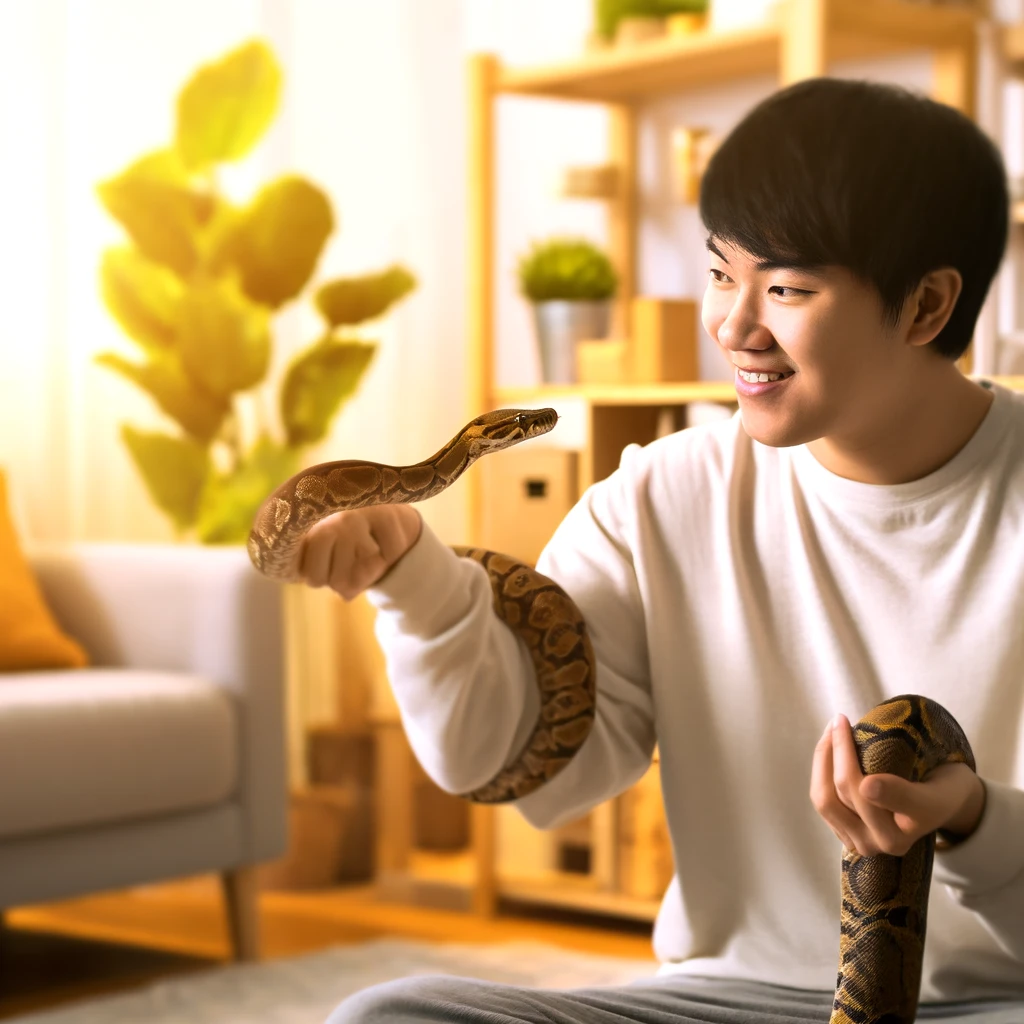
Jordan Taylor is a seasoned pet care expert and a vibrant contributor to Petmaw.com. With over a decade of experience in veterinary science, Jordan brings a wealth of knowledge and a deep passion for animals to every article. After earning a degree in Veterinary Medicine from the University of Alaska Anchorage, Jordan spent several years working in a busy veterinary clinic, where they honed their skills in pet nutrition, behavior, and wellness.
Jordan’s love for animals isn’t just professional; it’s a fundamental part of their life. Home is shared with three rescue Sloth, two cats, and a small flock of backyard chickens, each with their own rescue story and special place in Jordan’s heart. This personal connection to animals shines through in Jordan’s writing, making their advice not only expert but also empathetic and practical for pet owners.
At Petmaw.com, Jordan is dedicated to providing pet owners with the latest research, trends, and tips in pet care, from innovative feeding strategies to understanding the subtle signs of pet health issues. Whether you’re a seasoned pet owner or new to the pet parenting world, Jordan’s insights aim to enhance the well-being of pets and deepen the human-animal bond.
In their spare time, Jordan is an avid hiker, often found exploring the trails with their dogs. They also volunteer at local animal shelters, offering their expertise and helping animals in need find forever homes. Jordan’s commitment to animal welfare and passion for sharing knowledge makes them a cherished member of the Petmaw.com family and a trusted guide for our readers.
